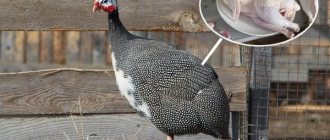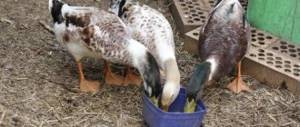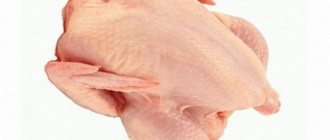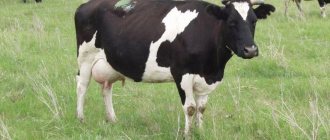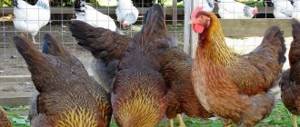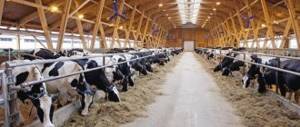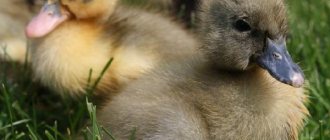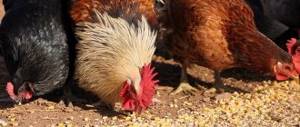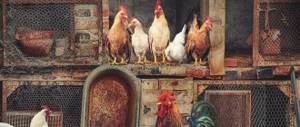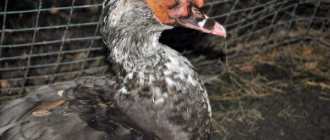What is marbled meat
More often this term is used for beef, but can also be used for pork, horse meat (Yakut horse tenderloin). Marble meat is a piece of red fillet that contains a sufficient amount of intramuscular fat, arranged in layers, and resembles a marble pattern. Marbling is rare in young cows and bulls, since in veal fat develops first in the area of the heart, kidneys, and near the pelvis (under the skin). Only after the animal matures, fatty fibers begin to form in the intermuscular space and directly inside the muscles.
Marbled beef, what kind of meat is it and why is it called that?
Marbled beef is a valuable type of meat with a high content of intramuscular fat. Why is it called that? Thin layers of fat on a red background form a pattern, making marbled beef look like this noble stone when cut. Due to its unique taste properties, the product is deservedly popular among gourmets around the world.
The world first learned about marbled meat in the 17th century. Bulls of a certain breed were raised in the land of the rising sun. Japanese marbled beef was originally intended exclusively for warriors and sick people on the recommendation of a doctor. Production on an industrial scale began at the end of the 19th century. The main world producers of this tasty and healthy product are: USA, Japan, Australia, Argentina, New Zealand. The Russian market has recently significantly increased the number of bull calves for the production of this type of beef.
What is the difference between marbled beef and regular beef?
There are two main types of cows – beef and dairy breeds. The latter are designed to give milk, which is what they do all their lives. When a cow of this breed gets old, it is sent to slaughter. Such meat is sold in markets and supermarkets. Beef cows are bred specifically to be slaughtered after a certain period of fattening (grain or grass). Such animals are genetically predisposed to the growth of intramuscular fat, due to which the beef has a marbled pattern.
The meat with streaks of fat is very soft, juicy and tender. Marbled veal does not often appear on store shelves; it is highly valued because it requires strict adherence to rearing technology. Marbled pork, like beef, is considered a delicacy due to its small share in the total volume of meat products produced, while the demand for it is increasing. Selected beefsteak with layers of fat cooks very quickly - young meat only takes a few minutes.
The concept of marbled beef and the technology for its production
Many people are interested in the question: marbled beef - what is it and what are its specific features?
Previously, such meat was produced only in Japan. It was made from cows of two sacred breeds - Wagiu and Tojima. Today, Japanese marbled beef has gained worldwide fame. The country supplies about 120 types of these meat products to the world market.
In Russia, the production of marbled beef is just beginning to gain momentum. The following breeds of cows are used to produce meat:
Cattle live in narrow pens, because with maximum restriction of physical activity, fat accumulates inside the muscle tissue. To avoid bedsores, cows are given mechanical vibration massage.
Also, for 200-300 days they are fed with selected grain. In addition, they are given premium quality beer to increase their appetite.
How marbled beef is raised
In the Russian Federation, the selection of beef cattle is only gaining momentum. One of the leaders in this agricultural segment is the group that produces products under the “Primbeef” brand. This marbled meat is obtained from Aberdeen Angus bulls, which are grazed and fed in the ecologically clean region of the Kaluga and Voronezh regions.
During the year, the animals live in an environment close to natural; they eat meadow grasses on free range, after which they are transferred to feedlots. The manufacturer gives them a special multi-component cereal mixture based on wet corn for six months. As a result, high-quality marbled meat ends up on the shelves, from which juicy steaks are made. To ensure that the flavor of the beef has time to fully develop, it undergoes two weeks of wet maturation before delivery to stores.
Factors affecting marbling
This term determines the presence of intramuscular fat in meat. Evaluators look at the volume and distribution of fatty fibers in the longissimus dorsi muscle between the 12th and 13th ribs. The degree of marbling is one of the main criteria for determining the quality category of a product. This indicator depends on the breed, genetic data of the animal, and selection. Beef cattle (Wagyu, Aberdeen Angus, Shorthorn, etc.) and dairy cattle (Holstein, Jersey) have more fatty tissue in their muscles.
You won't get marbled meat without proper nutrition. The longer cattle are fed high-calorie feed, the greater the chance of obtaining the highest possible quality indicators of beef, but at the same time a significantly smaller amount of marbled tenderloin will be produced (the ratio of lean meat to marbled meat changes in favor of the former as the animal ages). Feeding cows and steers large quantities of grains such as corn and barley will change the color of the live from yellow to white. In addition, the chances of obtaining higher quality in accordance with accepted standards will increase.
Insufficient physical activity is a factor that also affects the cultivation of marbled meat. Steers and cows that were raised in cramped stalls have softer meat than animals that were allowed to roam a lot. Thus, animals limited in movement easily accumulate fat inside the muscles, and their tenderloin becomes soft. Free-range cattle eat a lot of fiber-rich grass (instead of grain) and have a lot of force on their muscles when walking, so the muscle tissue becomes dry.
The world's generally accepted technology for raising and feeding livestock to produce marbled meat is feedlots, which are areas for fattening high-calorie feed for at least 4-5 months before slaughter. The animal's initial growth period is during free grazing. The Kobe breed of bulls is fed milk until they are six months old, after which they are transferred to pasture, where they grow with virtually no human intervention on free grazing.
- The nature of headaches in brain tumors
- Lupus - what is this disease, treatment. Symptoms of lupus erythematosus
- Penalty for expired passport for late replacement
Grown-up cattle are transferred to individual rooms with soundproof walls and suspended on reins so that they cannot move, but also do not lie, since then the muscles will be under tension to evenly layer the tissues with fat. At this time, the bulls receive selected grain and high-quality beer (the latter is needed to improve appetite). This diet increases fat deposition. The average standard for grain feeding is 200-300 days. In order for the fat to penetrate deeper, forming thin layers in the muscles, the bulls are periodically given vibration massage.
Content
How is marbled beef raised? Most of the “marble” breeds spend the first months of their life grazing with the maternal herd; After this, they can be sent to free range or immediately transferred to special conditions. They consist of keeping them in soundproof rooms: there the individuals are suspended on reins (which limits physical activity and at the same time does not allow them to lie down). Animals are often given massages and allowed to listen to music. There is an opinion among professionals that high-quality meat is produced by the sound of a saxophone. All of the above together makes the meat incredibly tender and contributes to the appearance of the famous fatty layers and inclusions.
Types of marbled steaks
Beef steaks are an expensive dish, the meat for which is taken from the best parts of beef carcasses. Only a tenth of the entire cow is suitable for their preparation. Modern cooking distinguishes the following types of steaks, the names of which indicate the place of the carcass from which the meat was cut:
- club steak - cut from the back at the thick edge of the longissimus dorsi muscle, has a small rib bone;
- ribeye steak – taken from the subscapular part of the animal’s body, has a large amount of fatty tissue;
- T-bone steak - meat on a T-shaped bone, cut at the border between the lumbar and back parts near the thin edge of the longissimus dorsi muscle and the thin edge of the tenderloin, due to which it consists of two different types of fillet (New York bone and filet mignon) ;
- striploin steak – taken from the strip of the lumbar region, without bones;
- porterhouse steak - cut from the loin of the cow at the thick end of the tenderloin;
- roundramb steak - cut from the upper part of the hip area;
- Sirloin steak is marbled meat that is cut from the loin in the area of the head of the tenderloin;
- screet steak - a very tasty, expensive piece from the diaphragm of an animal;
- filet mignon - a transverse thin cut of the central region of the sirloin with the most tender meat;
- tornedos - small slices from the thin edge of the central part of the tenderloin, which are used to prepare medallions;
- Chateaubriand is the thick edge of the central part of the tenderloin, which is fried whole, not unlike filet mignon, but is not served standing on a plate, but laid out lengthwise.
Differences from regular beef
1. Marbled beef differs in appearance from ordinary beef.
2.The nutritional value of products is not the same. Let's compare these varieties:
a) For 100 grams of marbled meat there are 170 kcal, protein 18 grams, fat 10 grams, carbohydrates 0 grams, i.e. it is relatively low in calories, despite its obvious fat content.
b) 100 grams of regular beef contains on average 187 kcal. up to 230 kcal., protein-18.9 g., fat 12.4 g., carbohydrates 0 grams. The calorie content of regular beef is slightly higher than that of marbled beef, although there are no obvious signs of fat content.
3. The differences also lie in taste. Compared to simple cow meat, dishes made from marbled meat are much more tender, juicy, and tastier. Even the texture of the product and aroma are different. According to age, marbled meat should be taken only from young bulls.
4.Preparing marbled beef for sale differs from ordinary meat in aging (fermentation). There are 2 types, each of which gives its own quality result. But the general idea is that due to the softening of the fibers, properly fermented steaks practically melt in your mouth.
5.The main difference is the price. Marbled meat is several times higher than plain meat, due to the special conditions of keeping bulls of special breeds. This is high-calorie food, special care and other factors.
How to cook meat
To fry marbled fillet on a grill or frying pan, use the rib cut, which has a high degree of fat and juiciness. This version of the dish in restaurants is more valuable than others. Steamed beef is not recommended. When cooking steak, it is better not to rush, otherwise the inside of the piece will remain raw. The optimal temperature for marbled beef according to the classic recipe is 160 degrees.
When cooking meat over low heat, turn it often, heating the product evenly on all sides. You will get not just a beautiful crust, but also a well-fried dish inside. You should not allow the muscle fibers to contract from the shock of the heat, as they will quickly release all the moisture and the steak will come out dry. If there is a fat rim on the piece, do not cut it off when cutting the fillet, but leave it while it is fried, then the steak will be as juicy as possible. Excess fat can be trimmed off after cooking. Vegetables or potatoes serve as a side dish for marbled beef.
Story
The homeland of marbled beef is Japan. It was here, at the turn of the 19th and 20th centuries, that the technology of the so-called “marbling” of meat appeared.
This happened randomly - when beef production began on the islands (before that, cows were used only as draft power), the animals were driven into cramped small stalls due to lack of space.
And the bulls began to get fat, since it is precisely with a sedentary lifestyle that the body’s natural “desire” manifests itself to store fat inside the muscles. Cattle that grow up on free grazing will never produce high-quality marbled meat, because the animals' muscles are constantly in motion, and fat cannot accumulate.
In Europe, the beginning of meat consumption dates back to the times of Ancient Rome, but selection and breeding began seriously closer to the 18th century. In the New World, they became acquainted with beef when visiting Columbus. First, Longhorn cattle were brought here, then English Herefords and Scottish Angus.
Settlers increasingly began to fry meat over an open fire, and by the mid-19th century, cooking steak was almost a cult, and a lot of attention was paid to the “right breed.”
In 1878, the first purebred Angus herd was created in America, and 5 years later the American Association of Aberdeen Angus Cattle Breeders was organized. And it was from this moment that we can talk about the beginning of the production of marbled Black Angus beef in the USA, and technologies different from Japanese ones were used here.
In general, the concept remained exclusively in Japanese and American culture - other countries were content with ordinary meat. And the Soviet Union is no exception - such delicious dishes were unheard of here until Nikita Khrushchev tried marbled meat during an official visit to the United States.
Upon his return, the Chairman of the Council of Ministers of the USSR ordered his cook to prepare the same dish, but the experiment was unsuccessful - because it was not a matter of the recipe at all, but of a unique variety. There was simply no suitable beef available in the USSR at that time, and the food did not live up to the expectations of the former Secretary of State.
Later, on behalf of Khrushchev, a special farm was equipped in the north of Ukraine, where bulls of a special breed were brought from England. The finished raw materials were sent directly to the Kremlin by plane. And only then did the country’s top officials appreciate steaks made from marbled meat - and it’s not surprising, because the difference is actually obvious. Let's take a closer look at what exactly are the differences between these products.
Price
The cost of this type of meat differs depending on where it is purchased. You can buy marbled steak at the market, in the supermarket and even on the Internet. Let's imagine the average prices for the product in Moscow:
| type of product | Weight | Cost in rubles |
| Thick edge on the bone, back cut, frozen | 800 g | 1500 |
| Chilled ribeye piece | 900-1000 g | 2300 |
| Angus Striploin chilled, Miratorg | 500-900 g | 1550 |
| Chilled thigh pulp, boneless, Primebeef | 950 g | 900 |
| Miratorg Ribeye PRIME thick edge 7 ribs chilled | 5 kg | 3200 |
Aberdeen - Angus breed
The breed comes from Scotland, because of this it has its own characteristics - unpretentious, hardy, and tolerates temperature changes well. In Russia, they are bred in different regions - in the Caucasus, Stavropol Territory, Siberia and Altai, Volgograd, Orenburg and Voronezh regions.
The classic color of the breed is black, but red Angus representatives have also been bred to match the characteristics of this breed.
The advantages of Angus are their unpretentiousness and resistance to sudden temperature changes to critical values. Therefore, they can be kept on open pastures all year round.
Bulls gain weight intensively, from 700 - 800 grams to 2 - 3 kg. per day depending on the amount of feed. The food must be of high quality and meet certain requirements.
The breed is very early - heifers are inseminated at the age of just over a year, weighing more than 300 kg, and bulls at this time reach half a ton in weight.
Angus are very economically profitable not only because of the conditions of their detention, but also due to their good health.
Calves of this breed are born relatively small, which makes calving easier and does not harm the health of both the cow and the newborn calf. Therefore, calves have very low mortality and from the first days graze with their mother, remaining on suction for up to 8 months, which also has a positive effect on the health and growth of calves.
Because the breed is so precocious, individuals mature quickly and may become obese, which is why they may not be able to support their weight.
Representatives of the breed are hornless (polled), black or dark brown in color (called red), short, but very large in build due to the large amount of muscle mass on the body. Bone mass is relatively low as a percentage of meat.
The disadvantages of the breed can be considered that they need extensive pastures and at the same time they do not need constant control. In such cases, Angus can become wild and behave aggressively towards humans.
Meat from bulls of this breed belongs to the premium class, since the fat layers are evenly distributed between the muscle fibers, which gives Angus steaks a special tenderness of taste and high nutritional qualities.
